The Argarian society developed new ways of working with metals, introduced new weapons, had a political system unknown in Europe at that time and a disastrous agricultural policy
By Nick Nutter | Updated 11 Apr 2023 | Andalucia | History |
Login to add to YOUR Favourites or Read Later
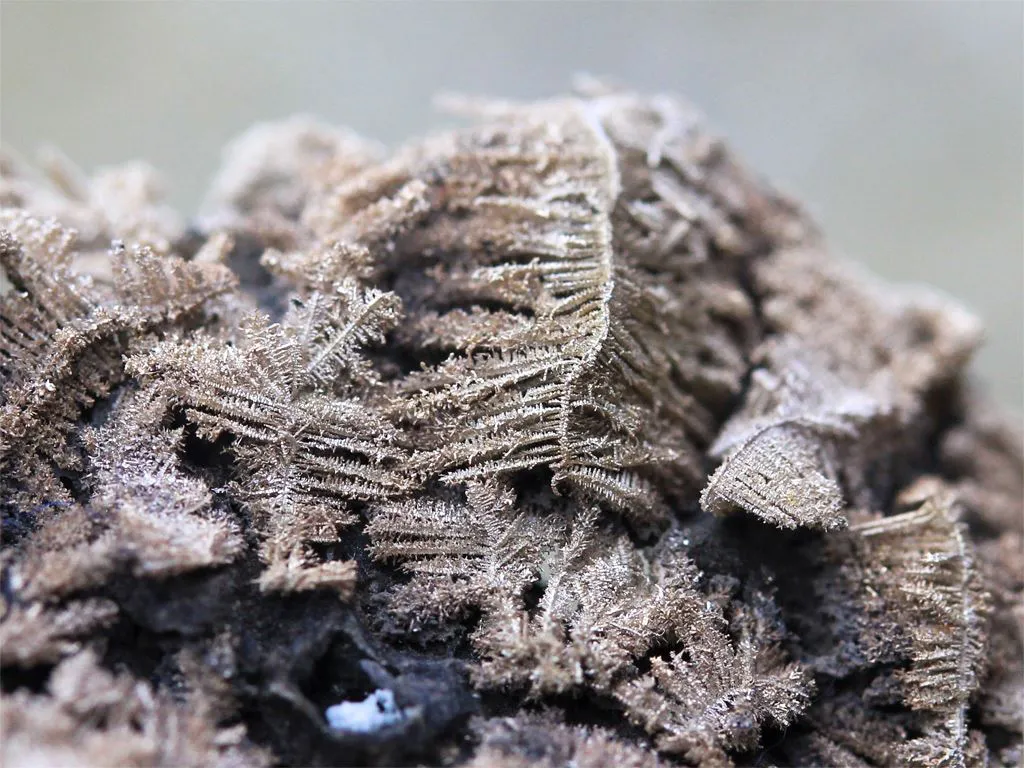
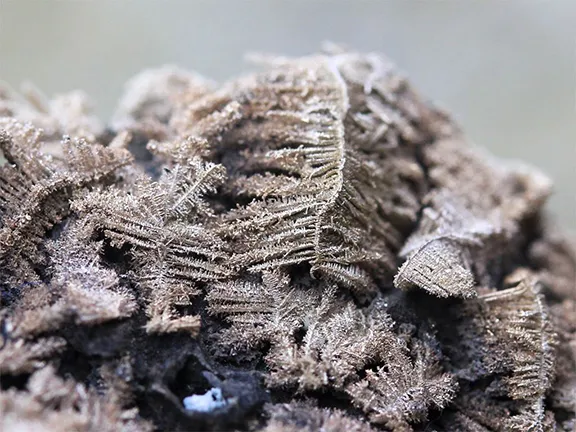
Native silver on arsenic
The Argarian Society that arose about 2200 BC in eastern Andalucia and Murcia and subsequently spread north as far as Cuidad Real, west as far as Málaga province and east as far as Alicante, developed new ways of working with metals, introduced new weapons, had a political system unknown in Europe at that time and a disastrous agricultural policy. An insular society, they also neglected trading networks that had been in place thousands of years.
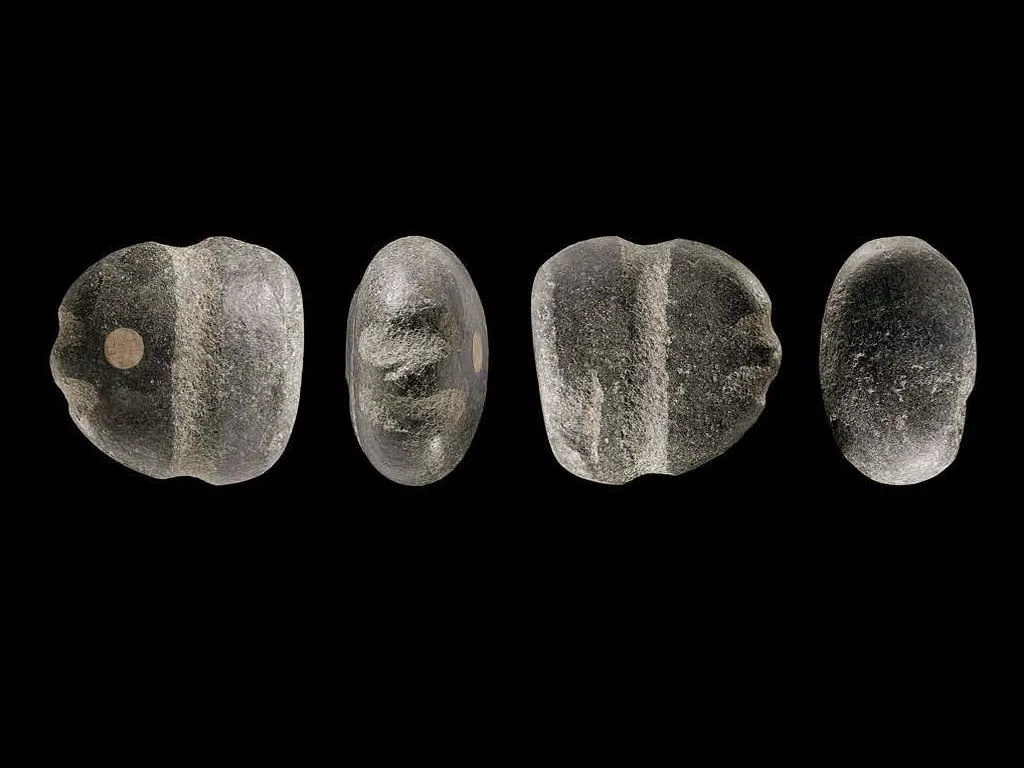
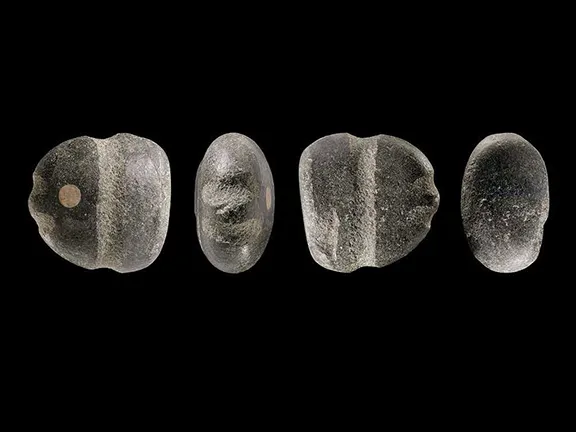
Forging hammers
Copper and silver ores were mined in the northwest of the territory controlled by the Argarians. Copper came from the region surrounding Cerro de la Encantada and the area around present-day Linares, whilst silver seems to have originated solely at Linares (this may change, studies into the origin of the silver in artefacts found in burial contexts in the Argarian settlements is in its early days (2021)). Smelting took place at the fortified settlement of Peñalosa. The metal was distributed throughout the Argarian territory to settlements where it was forged, polished and sharpened.
The metal working within the settlements was confined to workshops that doubled up as domestic spaces.
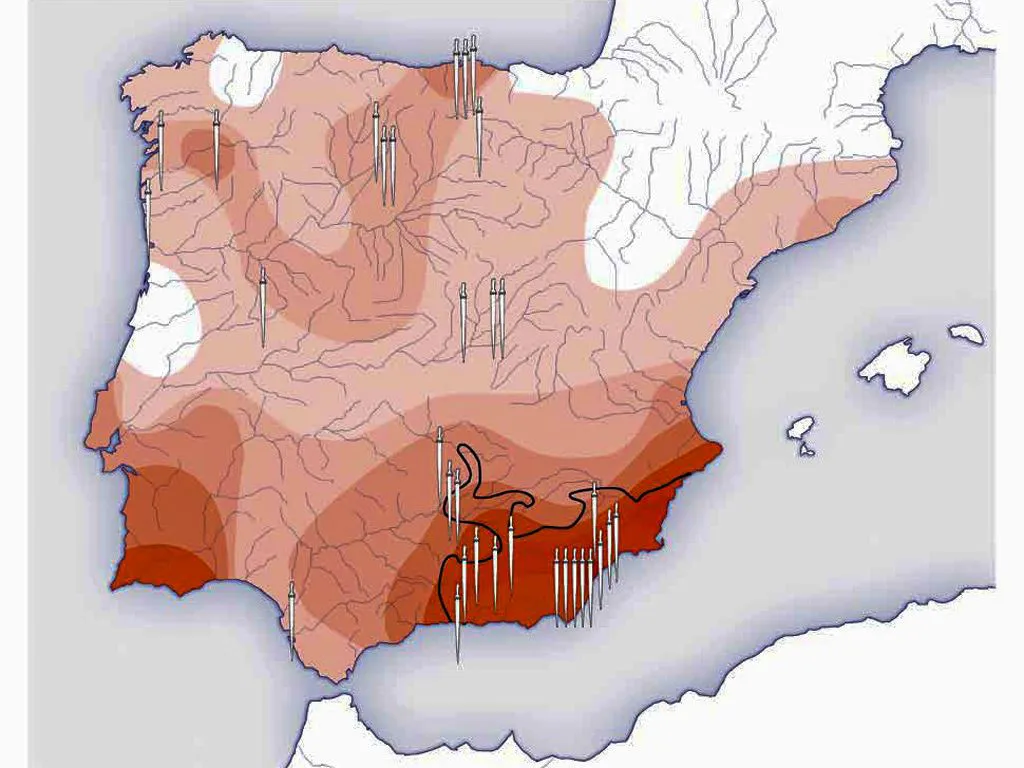
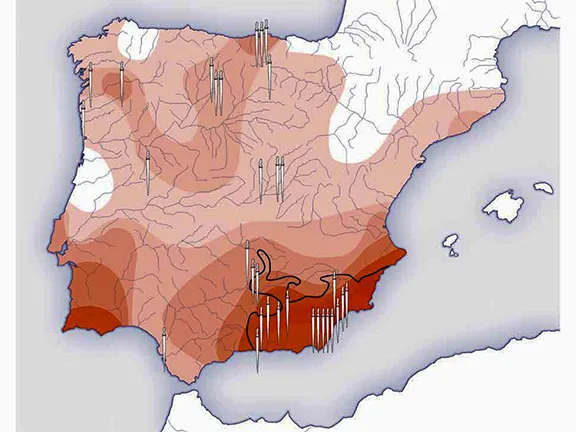
Distribution of the Argarian long sword
Silver deserves a special mention. In prehistoric Europe, silver is a rare precious metal compared to gold. It has been known on the continent since the 4th millennium BC but it appears only sporadically in the archaeological record from periods before the advent of the Romans. The scarcity of silver objects in prehistoric Europe is remarkable in view of the large amounts of technically sophisticated products made of other metals like copper, bronze, gold or iron. More than 700 silver objects are known from the Argarian culture, which contrasts significantly with the rest of Europe at the same time, where silver is mostly rare. The Argarian artefacts are mostly ornaments, usually small rings or spirals, but also some massive bracelets, beads, diadems or rivets on bronze daggers.
Cupellation, extracting silver from complex ores containing silver, is not known, to date, in the Iberian Peninsula until the Phoenicians arrived about 850 BC. During time the Argar people were establishing their society, cupellation is only known to have occurred in Syria (from 4000 BC onwards). It follows that the silver used by the Argarians was native silver, although that may change as more spectroscopic and chemical analysis is undertaken on silver objects found in Argarian contexts.
Naturally occurring native silver is rare in any part of the world. However, it does appear in some quantities at Las Herrerias (Villaricos, Almeria province), within the Vera basin and part of the core Argarian area. It is also found in the Sierra de los Filabres and the the Cabo de Gata, both within the core area and in the vicinity of Linares – La Carolina, in Jaén province, in the northern extension of the core area. In addition, Almeria province is peculiarly blessed with horn silver, silver chloride which is almost as rare in nature as native silver. Horn silver can be reduced to produce silver by the application of heat alone, no complicated cupellation of silver sulphides is required. Horn silver is abundant near Las Herrerias in the Barranco del Jaroso; in the 19th century, horn silver was re-discovered in the Barranco del Jaroso and caused a ‘silver rush’, and in Murcia at Cartagena and Mazarrón, that came under the Argarian umbrella by 1950 BC.
At the moment, from the analysis and research conducted on the silver artefacts found in Argarian contexts to date (2021) it is only possible to say that; the Argarians mined and processed native silver and horn silver in more than one location within their core area. The indications are that, as with copper and bronze, the smelting process occurred near the source of the mineral and finished articles were made in the settlements.
A recently discovered sword from Peñalosa with six silver rivets, a silver butt and four silver nails to reinforce the handle was obviously destined for a noble. Even more outstanding is its length, 60 centimetres, the first of its type to be seen in the Iberian Peninsula. The presence of such swords in elite burials implies a change in combat strategies and probably also indicates an escalation in violence at the end of El Argar, as can be seen quite clearly in a burial from Caramoro I (Elche, Alicante), with an 18 month old child killed by a sword blow on his or her forehead. The long sword appeared on the Iberian Peninsula as an innovation in weaponry after 1800 BC. They probably spread from the Argaric south-east, where their concentration is highest, to the north, at approximately the same time as swords are introduced to central and northern Europe from the Balkans and the Carpathian area. Another weapon type, which appears more or less simultaneously in Late El Argar and in eastern, central and northern Europe is a distinctive metal spearhead.
The short sword and, after 1800 BC, the longer sword, together with the halberd, indicated that the Argar warrior was equipped for hand to hand combat. The relative lack of arrowheads, in fact the flint arrowhead is almost totally absent, suggests that infighting was preferred to longer distance encounters.
The existence of weapons does not necessarily mean they were used in an offensive or defensive manner. Research into anatomical injuries suffered by people inhumed in Argaric settlements did not reveal any more injuries, proportionally, than studies conducted for different periods. The conclusion is that the Argaric weapons were primarily to denote rank and were a sign that force could be used if necessary. As one author put it, ‘An analysis of skeletons showed that while these Bronze Age people might have been periodically clubbing each other on the head, they were not doing a lot of lethal stabbing.’
During the final years of the Argarian society, the monoculture of barley became increasingly the norm, independent of whether it was grown in the arid coastal areas of Almeria or the slightly wetter, inland regions of Granada and Jaén. Carpological analysis shows that, at La Bastida, 90% of the crops were barley, a pattern repeated in all settlements tested apart from Cerro de la Virgen and Castellón Alto where wheat predominates over barley. Pulses generally account for less than 2% of the crop. Olives, vines and figs have also been recorded but it is unclear whether these fruits were cultivated or not. The Argarians were implementing dry farming techniques on land sometimes several kilometres from the settlement.
Barley is admirably adapted to growing in dry conditions in medium to low fertility soils but even so, the ground will be exhausted after only 3 or 4 years, after which the land needs to rest for about 10 years. This may not be a problem if there is sufficient labour to clear new land and if new land is available.
Pollen analysis in a peat deposit in the Cañada del Gitano basin high in the Sierra de Baza suggests that the Argarians exhausted precious natural resources. The deciduous oak forest that covered the region's slopes were burned off, leaving a tell-tale carbon layer, and replaced by the fire-tolerant, and fire-prone, Mediterranean scrub familiarly known as garrigue and maquis.
Further evidence of over exploitation of land and the effects of primary vegetation clearance can be inferred from pollen samples from discreet locations through the territory controlled by the Agrarian people. It is worth including a summary of that research programme that took place between 1998 and 2011 AD.
Samples taken from the middle course of the Aquas river in Almeria showed that, between 2135 and 1980 BC there was a gradual reduction of native evergreen species; oak, tamarisk and rock rose together with a corresponding replacement by steppic elements; mugwort, sagebrush, wormwood, amaranth and cereal grasses. Desiccation is indicated by a decrease in a microscopic shell called Pseudoschizaea.
At Berja in the Sierra de Gádor in Almeria there was a rapid replacement of deciduous oaks by coniferous pines and Mediterranean scrub species such as heathers, pistachio and rock rose between 2124 and 1946 BC. Charcoal layers indicated that widespread fires occurred every 100 years or so. The climate generally became drier during this period.
In the Cabo de Gata between 2021 and 1781 BC there was a steady decrease of evergreen sclerophyllous taxa, a woody plant with small leathery evergreen leaves that is the dominant plant form in certain hot dry areas such as the Mediterranean. This was replaced by steppic vegetation.
At Laguna Río Seco, in Granada province, at an altitude of 3020 metres above sea level, forest species such as the black pine were replaced with sagebrush and amaranth with a consequent increase in the incidence of fires.
Cañada del Gitano, 1900 metres above sea level in the Sierra de Baza in Granada province saw a reduction in black pine and deciduous oaks, replaced by evergreen oaks and Mediterranean trees and shrubs such as heathers, juniper and rock rose. Steppic elements replaced forest species and there was an increase in fire events between 1911 and 1771 BC. The area became drier during this period.
At Cañada de la Cruz in the Segura Mountains in Jaén province, 1595 metres above sea level, oaks, black pines and knotweed regressed and there was a sharp increase in cereal grasses, artemisia (daisies), and juniper. The climate became dryer and colder over this period as evidenced by the presence of a shrub called Ephedra. There was also an increase in land erosion and sedimentation in water courses between 1706 and 1626 BC.
We now move into the period when the El Argar society was itself regressing and the data is informative.
In the Cortijo del Campo, in the lower Aquas river, between 1631 and 1513 BC, pines, olea (native evergreen shrubs), oaks and rock rose increased slightly but were still dominated by steppic vegetation.
Samples taken at Siles in the Segura mountains in Jaén province indicate that between 1489 and 1315 BC, black pine and other native species were recovering strongly.
Prior to the Argaric period, grain was stored in large underground pits or silos. Once such a storage room was opened, the contents had to be consumed fairly quickly. This fact, together with the style and size of pre-Argarian pottery implied that communal eating was a frequent occurrence. This seemed to change once the Argar society was established. Cereal harvests were stored above ground and then portioned out into pithoi that had holding capacities between 100 and 300 litres. The range of standardised volume containers produced during the Argar period, and analysis of what they contained, indicates that the grain was then portioned off to individuals. The museum in Almeria city has a good selection of these distinctively Argaric vessels with lucid explanations of the use of each one. In newly established settlements the previous styles of pottery, with incised decoration in the form of dot filled triangles and lines are totally absent.
After 2200 BC, various technologies from the past were replaced. A whole series of new bone, antler, and ivory working techniques and artefacts appeared after 2200 BC. At the same time, the long south Iberian tradition of blade production ceased and flint arrowheads, produced by pressure flaking, disappear completely from the early Argaric occupations. Use wear analyses carried out on flint artefacts confirm that in Argarian settlements this raw material continued to be required almost exclusively for the preparation of sickle blades. A more developed arrow technology is also suggested by the introduction in the early Argarian settlements of sandstone polishers with a central groove.
Use wear analysis confirms that some of these grooves were used for the shaping or sharpening of bone and metal tools, while others could only have been arrow shaft straighteners. Such highly specialised polishers enabled an increase in the precision of arrow shooting and hence the efficiency of a weapon at a time when hunting hardly played any economic role in subsistence production.
A new type of grinding slab appeared, adapted for use with barley. It was more elongated and curved than previous grinders and produced a finer flour.
A new tool was found that has been interpreted as for use separating honey from beeswax.
Moulds, manufactured from fine sandstone, were used for casting axes, awls and various ingots. One such mould, found at Lugarico Viejo, may have been used to create riveted knives. The use of moulds produced standard shaped and sized implements such as daggers, awls and axes.
Metal working hammers were introduced at the beginning of the Argaric period. Some have double haft groves and have been mistaken for mining hammers. Used with stone anvils, they are clear evidence of forging activities. Due to their similarity with tools found in Greece, Crete, north and central Italy, Sicily and the Aeolian Islands dating from around the 2000 BC period, where people were also working with sulphide ores and naturally occurring copper-arsenic ores (that produced a less malleable metal – arsenic bronze) as opposed to oxides, it has been suggested that there was contact between the southern Iberian Peninsula and the eastern Mediterranean that ranged from direct migration to trading links. In other words a transfer of technology implemented by people moving between regions or ideas being transmitted person to person. More research is required before any conclusions can be drawn. However, overcoming similar problems often produces identical technology in widely separated locations which obviates the need for any transfer of technology.
During the Argaric period, in their territory, tanged knives and daggers, in use for at least 1000 years, were replaced by riveted hafts that required a different forging technique called hot forging and a process of annealing whereby the metal is heated before being shaped to reduce internal stress within whatever tool was being made. These are all techniques that had to be, and apparently were, learned early on during the Argaric period. Tool sizes generally increased and a new weapon, the halberd, appeared. Halberds are quite distinctive weapons consisting of a spear with an axe shaped blade on a, during Argaric times, wooden haft. The weapon could be used for slashing or thrusting. It was a design that endured, with modifications, until well into the 17th century AD. Halberds started to appear in elite male burials.
After 2200 BC, all major settlements in the Argarian territories, were placed on protected promontories such as La Bastida and Castellón Alto, or on plateaux with steep sides like El Argar. Common to all hilltop settlements seems to have been a particular concern with the storage and processing of staple food, mainly barley. Certain settlements and groups became central storage and distribution points, collecting produce from a wide area around the settlement. This accumulation, processing, and redistribution of staple food was developed at a regional scale after 2000 BC, becoming a cornerstone of the Argaric socio-economic structure and state organisation.
Particular emphasis has been placed on the distribution of olives, figs and grapes. Archaeobotanical studies indicate these fruits were grown in the lower, coastal areas and distributed into the higher, inland areas.
It follows that an efficient network of tracks existed between the major and minor settlements. These may be considered the internal networks and they would have extended into the northern areas where copper, arsenic bronze and silver were being mined and smelted, the finished ingots being transported south to the major settlements where they were moulded and forged into ornamentation, tools and weapons.
External networks, those that go beyond the Argarian territory, are evidenced by the distribution, after 1800 BC, of the long swords and rivetted daggers. These long distance paths extend directly north into the centrl massif, and to the west into Portugal. In addition, overseas networks evidently existed to North Africa as evidenced by the existence of ivory and ostrich eggs. The overseas networks were long established before the Argarians arrived on the scene.
References and further reading
Aranda-Jiménez, Gonzalo & Montón-Subías, Sandra & Jiménez-Brobeil, Sylvia A.. (2015). Conflicting evidence? Weapons and skeletons in the Bronze Age of south-east Iberia. Antiquity. 83. 10.1017/S0003598X00099336.
Caramé, Manuel & Díaz-Zorita Bonilla, Marta & Sanjuán, Leonardo & Wheatley, David. (2010). The Copper Age Settlement of Valencina de la Concepción (Seville, Spain): Demography, Metallurgy and Spatial Organization. Trabajos de Prehistoria. 67. 10.3989/tp.2010.10032.
Celma, Mireia & Stika, Hans-Peter. (2020). Circulation of olives, figs and grapes in the area of El Argar culture in south-eastern Spain. Journal of Archaeological Science: Reports. 31. 10.1016/j.jasrep.2020.102366.
Díaz, María & Ramos, Ruth. (2018). La cosecha de El Garcel (Antas, Almería): estructuras de almacenamiento en el sureste de la península ibérica. Trabajos de Prehistoria. 75. 67. 10.3989/tp.2018.12204.
Hinz, Martin & Schirrmacher, Julien & Kneisel, Jutta & Rinne, Christoph & Weinelt, Mara. (2019). The Chalcolithic–Bronze Age transition in southern Iberia under the influence of the 4.2 ka BP event? A correlation of climatological and demographic proxies. 10.12766/jna.2019.1.
Lull, Vicente & Rihuete, Cristina & Micó, Rafael & Risch, Roberto. (2013). Political collapse and social change at the end of El Argar.
Lull, Vicente & Micó, Rafael & Rihuete, Cristina & Risch, Roberto. (2013). The Iberian Peninsula during the Bronze Age. The Bronze Age in Europe. 594-616.
Montero Ruiz, Ignacio & Rovira Llorens, Salvador & Delibes, Germán & Fernández-Manzano, Julio & Herrán, José & Fernández-Posse, Mª & Martín, Concepción & Maicas, Ruth. (2003). HIGH LEADED BRONZE IN THE LATE BRONZE AGE METALLURGY OF THE IBERIAN PENINSULA.
Murillo-Barroso, Mercedes & Bartelheim, Martin & Cortés, Francisco & Onorato, Auxilio & Pernicka, Ernst. (2012). The silver of the South Iberian El Argar Culture: A first look at production and distribution. Trabajos de Prehistoria. 69. 293-309. 10.3989/tp.2012.12093.
Olalde, Iñigo & Brace, Selina & Allentoft, Morten & Armit, Ian & Kristiansen, Kristian & Rohland, Nadin & Mallick, Swapan & Booth, Thomas & Szécsényi-Nagy, Anna & Mittnik, Alissa & Altena, Eveline & Lipson, Mark & Lazaridis, Iosif & Patterson, Nick & Broomandkhoshbacht, Nasreen & Diekmann, Yoan & Faltyskova, Zuzana & Fernandes, Daniel & Ferry, Matthew & Reich, David. (2017). The Beaker phenomenon and the genomic transformation of Northwest Europe. bioRxiv.
Risch, Roberto. (2014). The La Bastida fortification: new light and new questions on Early Bronze Age societies in the western Mediterranean. Antiquity. 88. 395-410. 10.13140/2.1.2131.0082.
Risch, Roberto & Lull, Vicente & Micó, Rafael & Rihuete, Cristina. (2015). Transitions and conflict at the end of the 3rd millennium BC in south Iberia. 10.13140/RG.2.1.3881.1286.
Valdiosera, Cristina & Günther, Torsten & Vera-Rodríguez, Juan Carlos & Ureña, Irene & Iriarte, Eneko & Rodríguez-Varela, Ricardo & Simões, Luciana & Sánchez, Rafael M & Svensson, Emma & Malmström, Helena & Rodríguez, Laura & Castro, José-María & Carbonell, Eudald & Alday, Alfonso & Vera, José & Götherström, Anders & Carretero, José-Miguel & Arsuaga, Juan & Smith, Colin & Jakobsson, Mattias. (2018). Four millennia of Iberian biomolecular prehistory illustrate the impact of prehistoric migrations at the far end of Eurasia. Proceedings of the National Academy of Sciences. 115. 3428–3433. 10.1073/pnas.1717762115.
Vilaça, R. & Bottaini, Carlo. (2019). Breaking metals and handling ideas about Bronze Age Hoards from Western Iberia. Material patterns, invisible behaviors and possible interpretations, In A. Valera (Ed), Fragmentation and depositions in Pre and Protohistoric Portugal, pp. 125-139.
MUSEO DE GALERA. Guía Oficial Septiembre de 2007